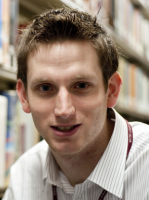An autistic scientist has used his own experiences in a study he hopes will challenge stereotypes associated with the condition.
Dr James Cusack, from Aberdeen University, conducted a four-year project with adolescent patients to find out how they interpret gestures and body language – something that people with autism are believed to do poorly.
His findings, published in the Journal of Neuroscience, show these assumptions may be exaggerated.
Participants were shown a series of human actions, using technology which shows figures as dots, then asked to distinguish between similar actions such as dancing and fighting.
The results showed that their ability to detect subtle differences was much higher than thought.
Dr Cusack, who was told at the age of 12 that he may need residential care for the rest of his life, said he hoped the research would help to develop a better understanding of autism.
He said: “Autism is generally associated with poor communication and social skills, which were thought to stem from a difficulty with interpreting other people’s body language.
“There are several theories that rely on this notion, but most are based on little data, so we wanted to test it more thoroughly.
“When we take account of these other factors properly, the results showed only a slight impairment and this was more of a generalised deficit, which might instead be attributed to factors such as the ability to pay attention.”
Christine Swabey, chief executive of autism research charity Autistica, said: “Having a study led by an individual on the spectrum is an extremely valuable approach, especially as it challenges what we previously believed.”
